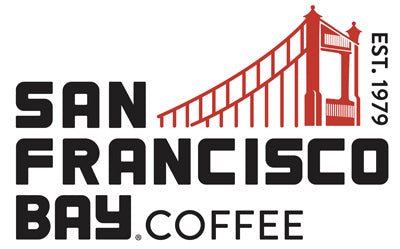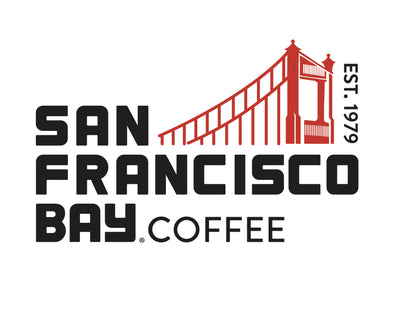Types of Coffee Grinds: What You Need to Know

Coffee is a beloved beverage that can be prepared in many different ways. One crucial factor influencing coffee's aroma, flavor, and quality is the grind size used to prepare the beans for a specific brewing method. In this guide, we explore the various types of coffee grinds and explain how to select the optimal grind size for your preferred brewing method.
The Importance of Coffee Grind Size

The grind size is one of the few significant determinants of flavor. Imagine the grind size as the water's path to extract the flavor and compounds from coffee beans.
In espresso, the finer the grounds, the more surface area, and the faster the flavor extracts. In cold brew, the coarser the grounds, the less surface area they have, and the slower the flavor extracts.
If the water is in contact with too much surface area of the grounds for too long, the flavor will likely taste bitter. If the grind size is too coarse and the water does not have sufficient time to make extended contact, the flavor will likely be weak and acidic. Remember that the flavor is also influenced by the quality of the beans and the temperature of the water, so grind size and brewing time are only two pieces of the puzzle.
Main Types of Coffee Grinds
While grind size is only one of several factors that influence the quality and taste of coffee, it is a crucial factor that must be carefully considered. Even if all the other factors are spot on, the flavor will be subpar if the grind size is incorrect. Here is what you need to know about all of the coffee grind sizes:
|
Extra-Coarse |
Coarse |
Medium • 0.75 millimeter particle size. • The texture of beach sand. • Best for pour-over, Chemex, and drip coffee. |
|
Medium Fine • 0.5 millimeter size. • The texture of table salt. • Best for Moka pot, stovetop espresso, Aeropress, siphon brew, and pour-over. |
Fine |
Superfine |
Choosing the Right Grind for Your Brew
Finding the perfect grind size for your brewing method takes a bit of experimentation, but these guidelines will get you started on the right foot:
Cold Brew
Use an extra-coarse grind for cold brew to prevent over-extraction during the long steeping hours. Think sea salt or breadcrumb texture. Coarse grounds create a smooth, chocolatey, low-acid profile cold brew fans love. The extended contact time means larger particles extract slowly and evenly, delivering sweetness without bitterness.
French Press
Stick with a coarse grind that resembles coarse kosher salt. This size keeps grounds from sneaking through the mesh filter while building that signature French press body. The larger particles allow oils and dissolved solids to pass through, creating that rich, syrupy mouthfeel French press enthusiasts crave.
Drip Coffee Makers and Pour-Over
Medium grind works beautifully for both drip machines and pour-over brewing. Think table salt or coarse sand. This sweet spot lets water flow at just the right pace through your coffee bed, extracting bright flavors without pulling harsh compounds. Pour-over methods particularly benefit from consistency here, ensuring even saturation and balanced extraction.
Espresso Machines
A fine grind, resembling table salt or slightly finer powders, is required for proper espresso extraction. The high-pressure environment requires this texture to create sufficient resistance for the coveted 25-30 second pull. Too coarse, and water rushes through; too fine, and you'll clog the machine. That perfect grind produces gorgeous crema and concentrated flavor.
Turkish Coffee
Turkish coffee demands the finest grind possible (think flour or powdered sugar consistency). This ultra-fine texture dissolves partially into the water, creating that distinctively thick, almost syrupy body. Traditional preparation requires this powder-fine grind to achieve the proper foam and sediment that define authentic Turkish coffee.
Tips for Grinding Coffee at Home
Blade Grinder

Blade grinders are the most common and affordable tools to break down coffee beans. They work by chopping the beans with a blade, almost like a tiny food processor. The downside of a blade grinder is that the coffee bean particles end up in different sizes. So, some particles will inevitably be fine and powdery if you try to make medium or coarse beans. This is problematic because different-sized particles have varying extraction rates, resulting in uneven taste of the brewed grounds. Additionally, the friction of the blade moving through the beans generates heat that may affect the brew's flavor. While a blade grinder is an easy and affordable option that works well for many people, it may not be the best choice for enthusiasts seeking an exact brew.
Burr Grinder

The second option is a burr grinder, also known as a burr mill. It works by crushing coffee beans between two rough discs called burrs. The tool creates a more uniform surface texture because the space between the burrs results in an even particle size. Burr grinders are available in multiple styles. Old-fashioned, manual mills resemble pepper mills and must be operated manually. Electric and flat burr grinders are adjustable and popular for commercial use. Electrical conical burr grinders are quiet and popular for use at home. Luckily, burr grinders are available at a variety of price points.
Discover the Right Coffee Grind Size with San Francisco Bay Coffee
The choice of coffee grind sizes largely depends on the chosen preparation method. To make a delicious cup or pot of coffee, start with high-quality whole beans, a good grinder, and your preferred brewing equipment. Reference the guide above to determine the grind size that matches your brewing method. For example, start with a coarse grind to make a French Press. Feel free to experiment with different grind sizes until you find what you like. Once you determine your preferred grind size, be consistent with it.
To discover more coffee advice and delicious beans, shop San Francisco Bay Coffee today!



